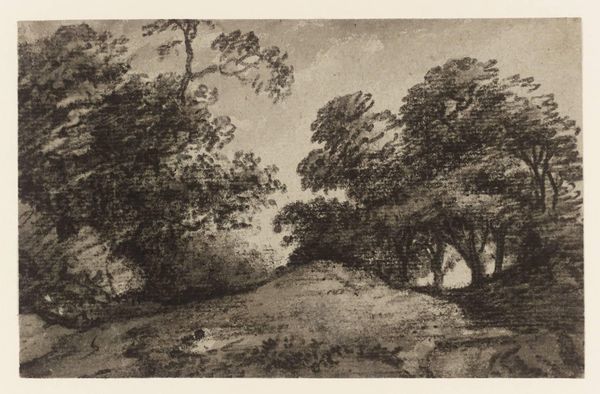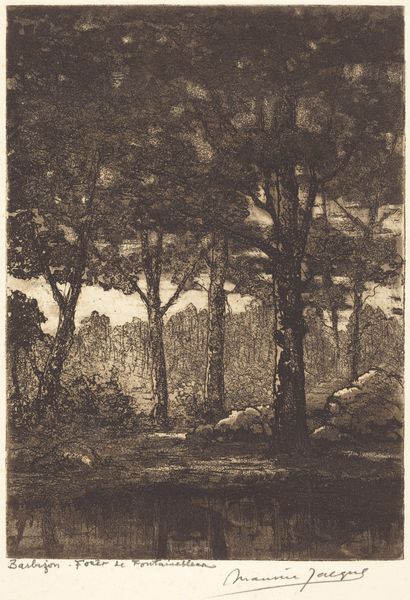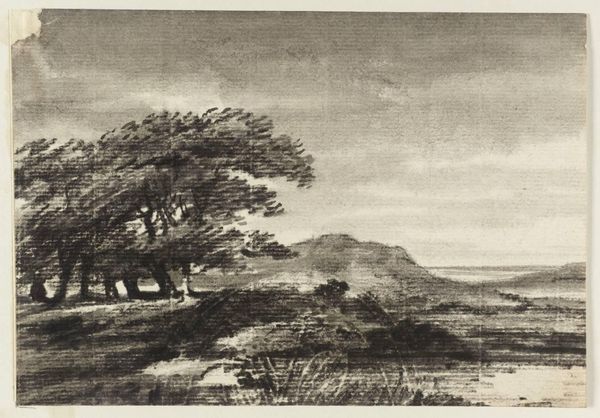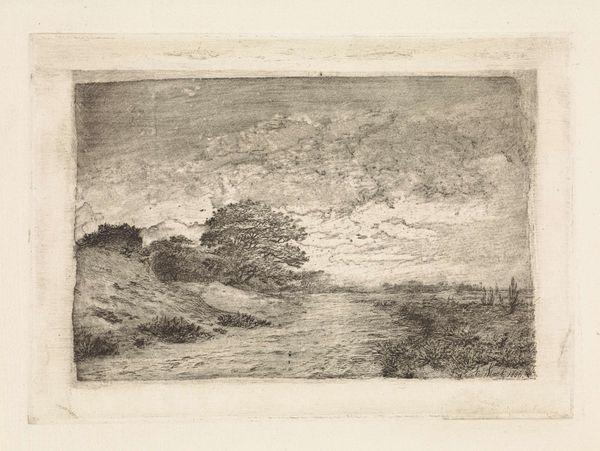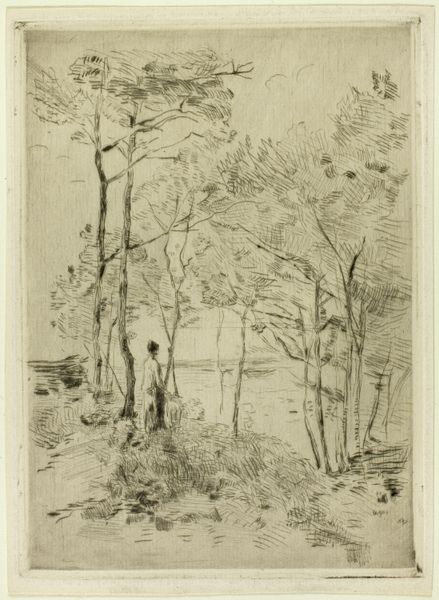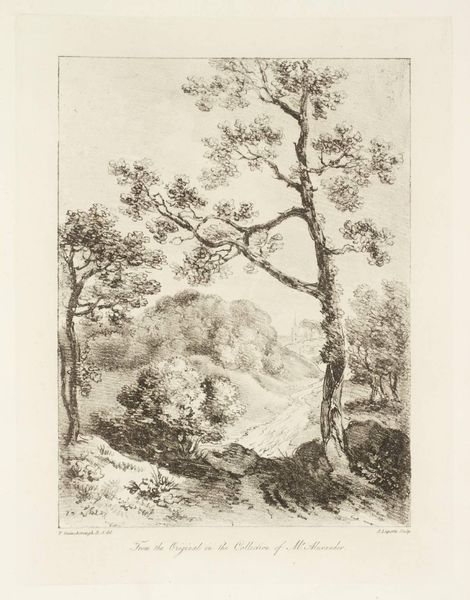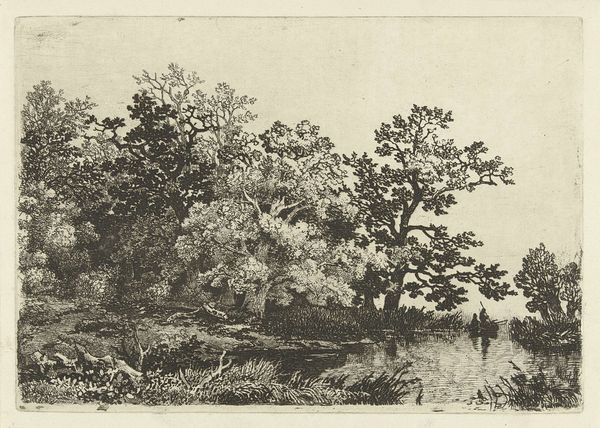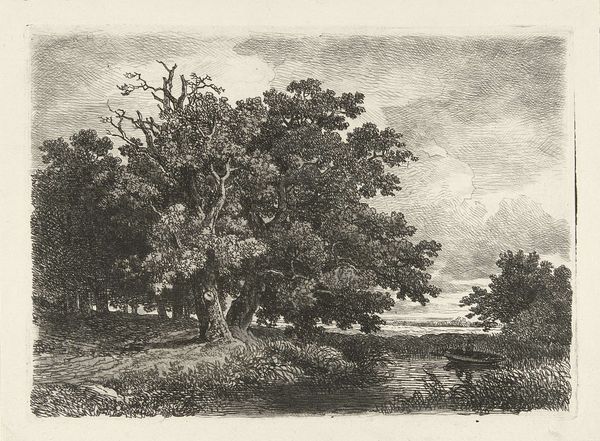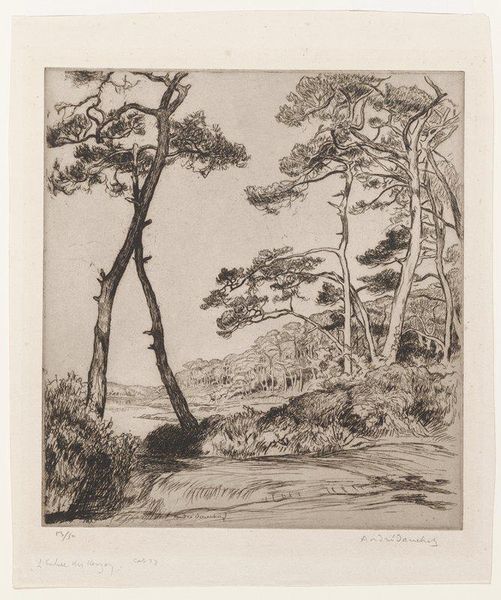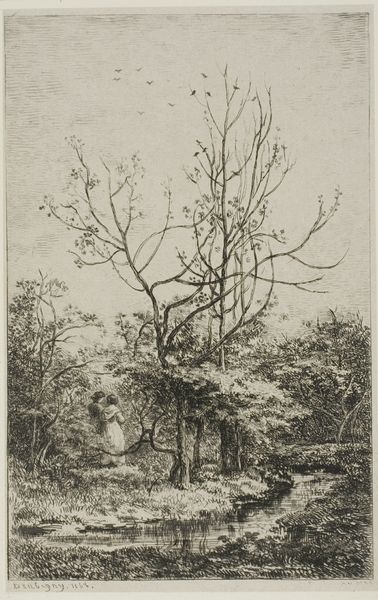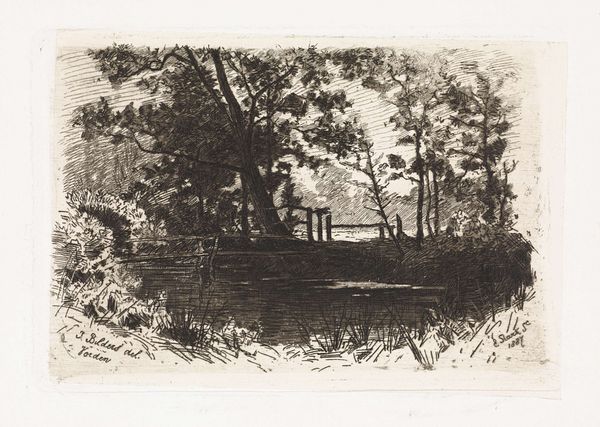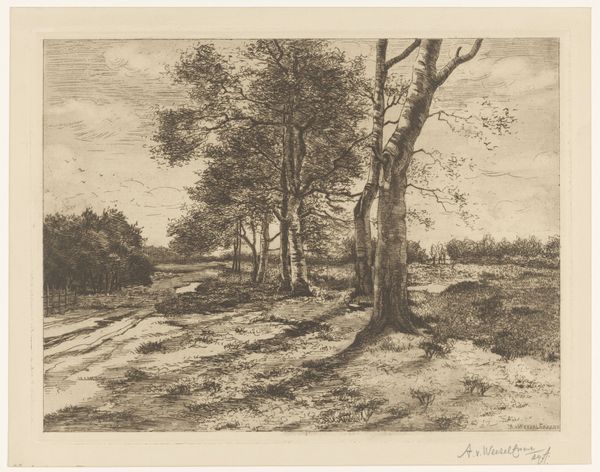
print, etching
# print
#
etching
#
landscape
#
realism
Copyright: National Gallery of Art: CC0 1.0
Editor: This is "Landscape" by Andrew Watson Turnbull, an etching from 1929. It's a quiet scene. What immediately strikes me is how dark it is, and yet there’s a feeling of expansiveness in the open horizon. What's your read on this piece? Curator: I see this piece as part of a larger historical narrative, one related to the rise of environmental consciousness in the early 20th century and the development of national parks. Notice the focus on undisturbed nature, presented in a classically picturesque way. To what extent is this scene 'real' and to what extent is it an idealized, even constructed, view of nature, palatable to urban audiences? Editor: Constructed, definitely. It feels very intentional, not a snapshot of something fleeting. Like a stage setting, but one emphasizing nature’s beauty and, perhaps, its vulnerability. Curator: Exactly. Consider the politics of imagery at the time. Landscapes like this one served to promote tourism and appreciation for wilderness areas, helping to shape a cultural understanding of the land as something to be both enjoyed and protected, often intertwined with colonial ideologies concerning land use. Are there are subtle cues in the artwork that suggest this? Editor: Possibly in how the composition seems ‘framed’, as if for consumption, presenting it as an image for the public. Curator: Yes. And think about the accessibility of prints like etchings, making this idealized vision available to a wide audience, further shaping public opinion. Also, whose views were ignored or silenced? Editor: It really hits home how art always exists within these larger conversations. I see it differently now. Curator: As do I. Examining it together unveils layers I might have overlooked individually.
Comments
No comments
Be the first to comment and join the conversation on the ultimate creative platform.

